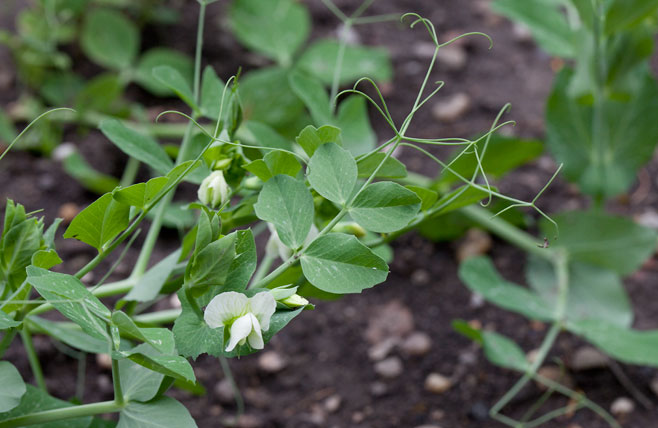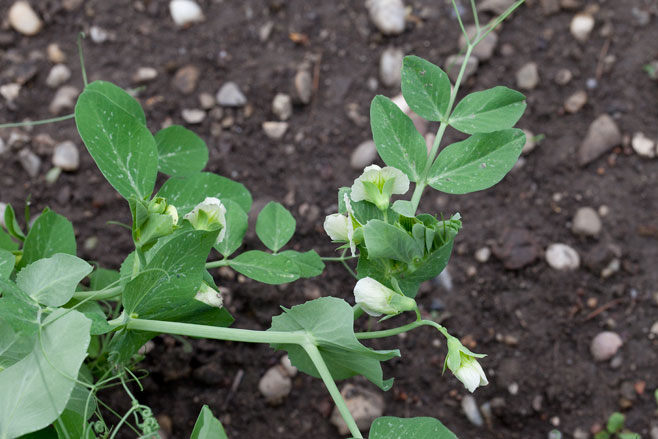|
Pisum sativum (Field and Garden Pea) Life
> eukaryotes >
Archaeoplastida >
Chloroplastida
>
Charophyta > Streptophytina > Plantae (land plants)
> Tracheophyta (vascular plants) > Euphyllophyta > Lignophyta (woody plants)
> Spermatophyta (seed plants) > Angiospermae (flowering
plants) > Eudicotyledons > Core Eudicots > Rosids >
Eurosid I > Fabales > Family: Fabaceae > Subfamily: Papilionoideae
 |
 |
|
Pisum sativum, Vienna Botanical Gardens,
Austria. [photos
H.G.
Robertson, Iziko ©] |
Originates from the Near East, was being eaten by people at least 9500
years ago, and by 8500 years ago there is evidence of pea cultivation.
Peas originate from the Near East where they have been found in
archaeological sites that date back to 7500 BC. However, the
characteristic features of domestication (e.g. smooth seed coats) only become
clearly evident by 6500 BC. Cultivation of peas in the Near East therefore
occurred a long time ago but seemingly not as long ago as wheat and barley which
were being cultivated by about 7800 BC. Nevertheless, it appears that peas
were growing or being grown in company with wheat and barley during the
agricultural revolution of the Neolithic. Lentil and Chickpea were also being
grown and together with Pea were the main non-meat protein food sources (peas
have about 22 % protein). Pea cultivation had spread to central Europe
by 4000 BC and by 2000 BC it had spread throughout Europe and also east into
India.
Pisum sativum is morphologically highly variable and is predominantly
self-pollinated which means one can easily develop different true breeding
lines. These features were instrumental in the success of the classical genetic
experiments performed by Gregor Mendel with this species.
Peas originally were grown to full size and stored dry. However, in modern
times they are more often picked green before maturity and eaten fresh.
References
-
Sauer, J.D. 1993. Historical geography of
crop plants - a select roster. CRC Press, Boca Raton, Florida.
-
Zohary, D. & Hopf, M. 1993. Domestication
of plants in the old World - The origin and spread of cultivated plants in
West Asia, Europe, and the Nile Valley. Clarendon Press, Oxford.
Text by Hamish Robertson
|
